





The following remarks were given by Adam Alonzo on the evening of February 28, 2008
Good evening and thank you for coming to my fourth annual photography exhibition. Another year has come and gone, and the evidence of those twelve months is hanging on the walls around you. As you may know, I became a photographer on the afternoon of Tuesday May 25, 2004. I bought a camera on an impulse and since then I've taken pictures literally every day. During the past year, there were some days when I shot no more than maybe a dozen photos, and there were other days in which I took many hundreds. Despite that disparity, each day is represented by five photos on my Web site. You can go to adamalonzo.com to see the entire visual history. For those of you interested in numbers, that's 1825 pictures posted in the past year, or about 6870 in the nearly four years since I bought my camera. I personally am not interested in numbers, though they are the inspiration for the title of this show. While I make no claim to "Originality of Vision" or "Creativity of Vision," I've got the "Persistence" angle covered pretty well.
Needless to say, I have my camera with me almost all of the time and no matter what the weather is like, or how busy my schedule is, or how I'm feeling, I take photographs every day. It would be nice to say I always take pictures of things that are beautiful or remarkable, but on many occasions I have to settle for the colorful or symmetrical, for humor or irony, for lines or patterns.
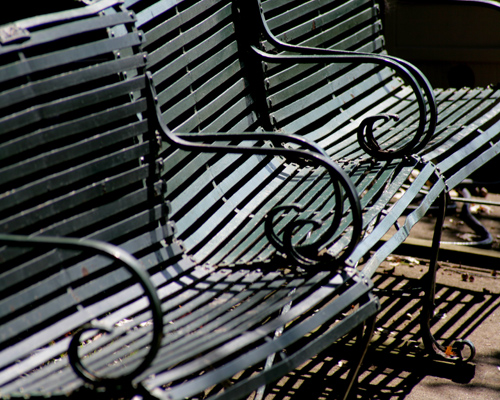
Because I pass through the same buildings and travel along the same streets every day, I am forced to look at them closely to find subjects to photograph. There's a low-level critical evaluation constantly running in my head, parallel to my brain's optical processing system. Everything I see is instantly judged for visual quality or interest. Sometimes it reports, "This is worth preserving." The majority of the time, it doesn't. These decisions are mostly intuitive rather than intellectual.
Only after a potential subject has passed the initial test does my intellect become involved. "Do I have time to take this picture? Is it safe to stop the car here? Can what I see with my eyes be convincingly captured by my camera?" Last week I watched a lunar eclipse through a row of icicles hanging outside my window, but that moment was for my eyes only. I'm familiar enough with my camera's limitations, and with my own, to know that I could never have gotten a decent image. I also ask myself, "Is this scene too similar to photos I've taken in the past?" Believe it or not, my choice of photographic subjects is influenced by the desire for novelty. Even though there is some repetition among my daily photos, I try to present familiar objects in new ways.
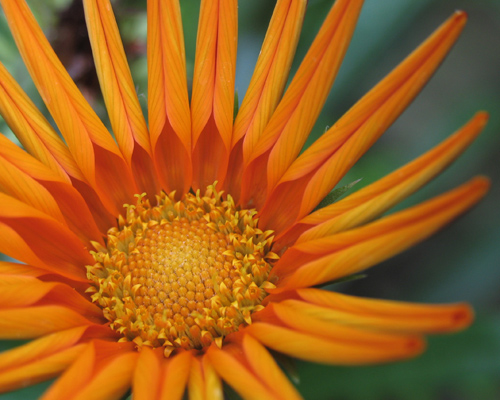
For instance, I take a lot of pictures of flowers, but not all of them are high-fashion shots. Some of them have the quality of documentary or street photography.
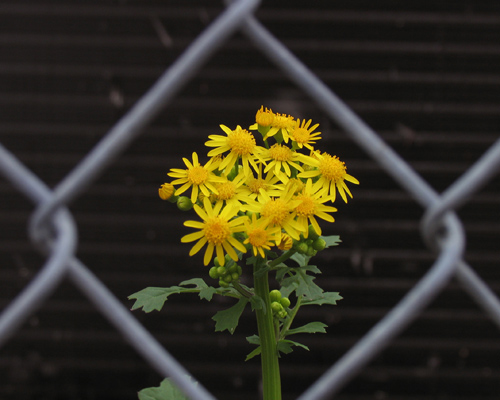
In addition, I try to expand the range of subject matter by going places and attending events that I wouldn't otherwise. But don't be deceived into thinking that I personally participate in these activities. No, I am strictly an observer, content to take photos while other people actually do things.
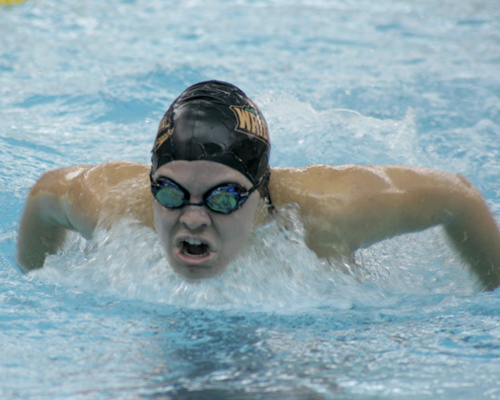
I might go to an athletic event even though I have no connection to any of the competitors, nor do I care who wins. My only concern might be about the color of the uniforms or the direction of the light.
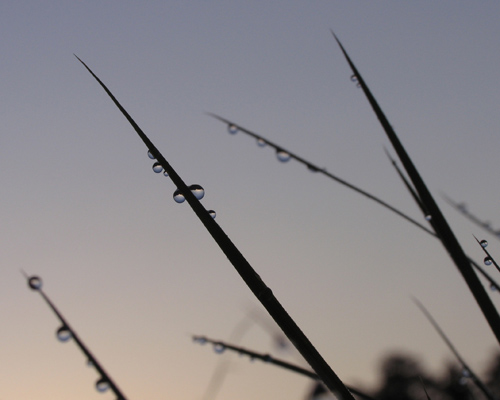
And you can be sure I never would've gotten up before dawn just to watch the sun rise over a prairie, unless I was going to walk away with some good photos.
The pictures that result from this daily routine are kind of like still frames extracted from the long and boring documentary film about my life. Yet any movie can be made more interesting through editing -- cutting out the dull parts and leaving only the good parts. This is a rather small exhibition compared to my previous shows. Since there are only about 30 pictures, you can draw the conclusion that the past year of my life has been exceptionally boring. Another reason for the small number of pictures is that I've become more critical and have raised my own standard over the years. Certain photos that were on the walls in previous exhibitions would never go on display today.
I have a thing about perfection: I haven't quite given up on it, and I want to be ready to capture it when and if it manifests itself. Part of the burden falls on me, since perfection can be easily overlooked if you're not watching closely, and if viewed from the wrong angle, perfection can appear ordinary.

My diligent pursuit of perfection made me slightly late for work on this particular day as I tried to compose the three or four main elements in this shot, working in dim morning light without a tripod. Fortunately the butterfly was going absolutely nowhere so I could take as many pictures as I wanted.
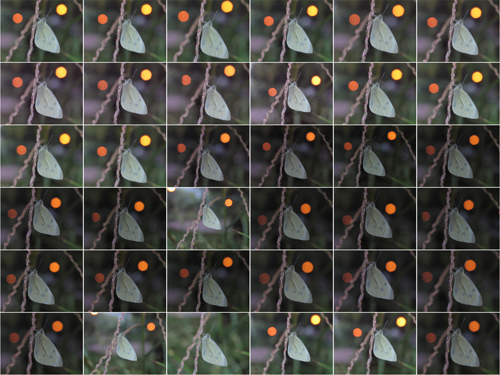
Now do you see why editing is a good thing?
Every time I have a photo exhibition, there are certain pictures that generate a lot of questions or comments. In this show, there have been three so far, so I'd like to talk briefly about them now.

It's fun for me to sit or stand anonymously here in the gallery and observe how people look at my pictures on the walls, or listen to what they have to say about them. I was still hanging photos for this show when I watched a guy walk into the gallery. I had my back turned, but was able to see him in the reflection off the glass in one of the picture frames. He walked directly up to this picture, looked at it, and then walked away. I assume he went straight to the Waffle House. People want to know if I planned this scene, or if there's a story behind the picture. I actually staged this photo for a class assignment about a year ago, and arranged it in advance with the model and the manager of a Waffle House. Several months before that, I'd driven by a Waffle House at night and liked how its bright lights stood out brilliantly against the night sky. I imagined being outside in the parking lot and taking a picture of a girl in a black dress sitting near the window, as if she was waiting for someone who would never come. Another title for this picture is "Stood Up at the Waffle House." Lauren was very patient to sit in a booth and pose for pictures even though there were customers and waitresses all around her. Rather than being stood up, she could've easily gotten a date that night, since some college guys saw her through the window and tried to make non-verbal contact with her. Lauren was either flattered or frightened -- I'm not sure.
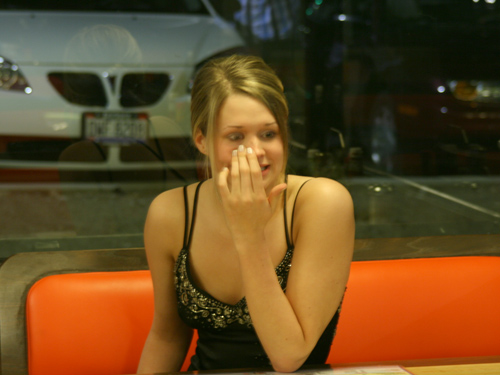

On the day before Lauren and I were at the Waffle House, Briana and I were in the studio. This picture is the result of another assignment in the same class last year. People want to know if the model is really jumping in the air, or if maybe she was laying on the ground with a fan blowing toward her.

It's clear from this series that she was in fact bouncing up and down over and over as we tried to get the right combination of body position, facial expression, hair and costume. And let me tell you, it was exhausting for me to stand there and watch her.

Briana's motion is frozen because two large strobe lights flashed as she was in the air. I cropped the edges of the picture and brightened the background, but otherwise it's all perfectly genuine.
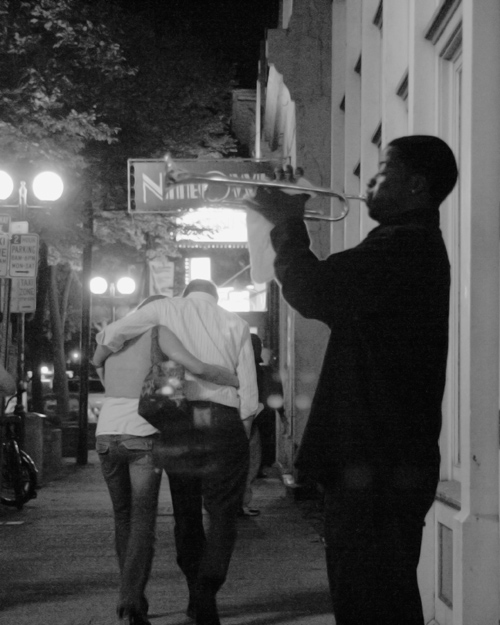
In an indirect way, this picture is also the result of a class assignment, but it wasn't for a photography course. It was History of American Jazz, and in that class I was required to attend jazz concerts and write reports about them. So one night I paid $45 to see the Tommy Dorsey Orchestra at the Victoria Theatre. Tommy Dorsey couldn't make it, and evidently Frank Sinatra is no longer with the band either. The group played with almost no improvisation and very little passion, performing the same pieces in the same way that they did the night before in some other town. So I left at intermission and returned home to the Oregon District. Driving down Fifth Street, I saw this young man playing trumpet on the sidewalk, giving away musical passion for free, something I didn't get at the Victoria for $45. I took several pictures from a distance, then walked up close to talk to the guy and drop some money into his trumpet case. He told me he was a student at Central State University, so I asked him if he was earning enough for tuition by playing trumpet on the street. He said the best he could hope for was to make enough money for laundry. I took some more photos of him, but it wasn't until this couple walked by that I really had a picture.

I was shooting in color, but the streetlights in that area produce a very yellow glow, so I decided to drop out the color entirely and just make the picture black and white.
In conclusion, I want to remind you that this is an art gallery, and my pictures are hanging on the walls. So does that mean my photos are art? Or are they just a visual record of my daily comings and goings? Isn't art something that is produced through a special process or in a particularly creative state of mind?
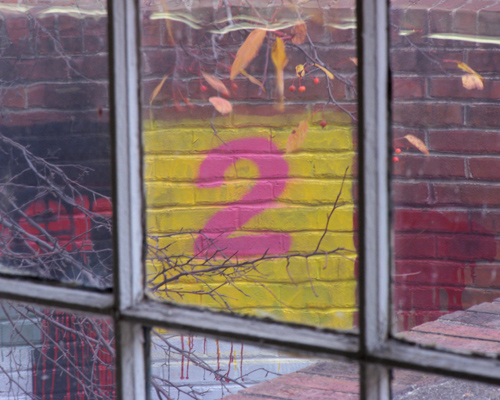
Driving to work or walking around campus during lunch are not very special or creative, yet that's often when I take pictures.
Since its inception in the nineteenth century, photography has always had questionable status as an art form. Traditionally, pictures were made by painters, and when they looked at the big boxy camera they said, "You can't make art with that! It's too easy." After a while, technology advanced to the point where cameras were small enough to wear around the neck. Photographers who still used big boxy cameras said, "You can't make art with that! It's too easy." Now technology has advanced to the point where digital cameras are everywhere. Photographers who still have film cameras around their necks say, "You can't make art with that! It's too easy." Well, I think that making art with a camera has very little to do with the mechanical or electronic processes that occur when you press the button. That part really is easy. The hard part is knowing when to press the button, and what to point the camera at when you do. The art of photography is in the seeing.
All artists who work in a two-dimensional medium (such as drawing, painting or photography) have something in common. They all need to fill a rectangular frame with lines, shapes and colors. It took me a while to realize -- or maybe to convince myself -- that a camera lens can be used like a paint brush.

In my case, I'm kind of like a painter who has no control over the paints he has to work with. Each day I'm presented with a randomly chosen palette of colors, and I simply have to make the most of what I've been given. But by pointing my camera in a certain direction and pressing the button at a particular time, I can control how the colors and shapes are arranged within the frame.
If you had been there beside me, with a camera, looking at the same thing, you probably would have taken a different photo. We each have our own personal way of seeing, like two eyewitnesses giving different accounts of a crime to the police, each having observed the event differently. This is what I saw. I didn't create the scene, but I did create the picture by choosing what to leave out and what to keep in, and by arranging what I kept in.
When you think about picture-taking this way, the content of a photo becomes almost irrelevant. It doesn't matter what you're shooting as long as the lines and shapes and colors are in the right place. I know for some photographers, content is everything. They have a clear message they want to get across with their pictures. This is not a big priority for me. I'm not hesitant to say that this photo has no meaning. It's an airplane. So what? Its significance, if it has any, is based on colors, lines, shapes and patterns.

Even with a photo that is less abstract, the same concept is true. Even I don't really care that this is a picture of someone playing a drum. What's important is how that scene is portrayed in the photo. On this occasion, there were several other people with cameras in the room, but none of them got a shot like this. They were shooting from the front, focused on capturing content: a man playing a drum. I shot from the side, focused on making an image: sunset illuminating a pair of hands striking a drum.
If I want to claim that my photographs are art, don't they have to have a meaning? Doesn't art contain a message conveyed from the artist to the viewer? My photos have no messages. They're all very clear representations of people and things, as precise and literal as the labels beneath each picture. This one is called "Drummer at ArtStreet" and that's exactly what the picture shows. When it comes to communicating a message, the photo and the label are equal.
I'd like you to envision a large illuminated sign, like a marquee outside of a theatre. It's made up of lots of small glowing lights, and if you look at them up close they don't tell you anything. But if you step back a little bit, you can see that the glowing lights form letters. Step back further and the letters form words. Move back even more and the words create a message.
Look closely at one of my photos. It doesn't tell you anything. There's no intrinsic meaning. But step back and look at several of them and you might start to see common traits. Take a look at an entire year's pictures on the walls and you may begin to perceive some messages. Taken as a group, my pictures seem to say that the world isn't such a bad place after all. These photos are evidence of things worth noticing and remembering. They are testimony to the beauty and dignity of people. They serve as tributes to the extraordinary among the ordinary. I was fortunate to find these things, and since you weren't there, I took pictures of them for you.







